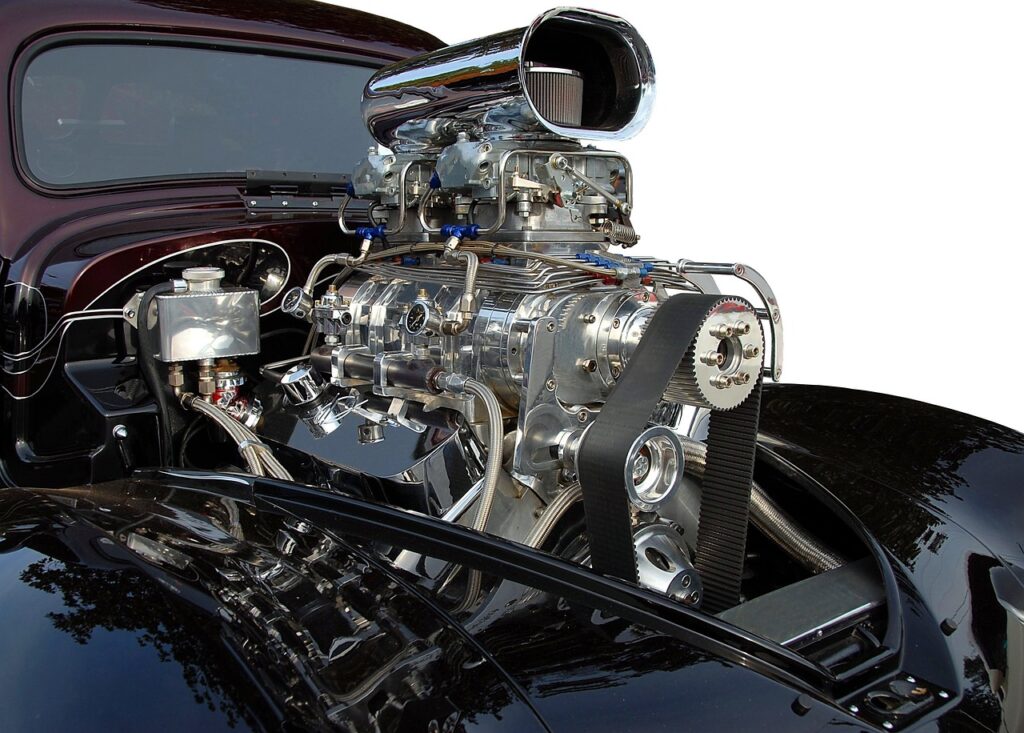Creating a High-Performance Mindset: How to Develop Mental Toughness in Leaders
Developing a High-Performance Mindset: The Key to Leadership Success
In today’s fast-paced business environment, leaders face increasing pressure to perform at the highest level. To achieve success, they need to develop a high-performance mindset that enables them to overcome obstacles and push through challenging situations. Mental toughness is an essential component of a high-performance mindset, and it is what separates the best leaders from the rest.
Mental toughness is not just about being resilient in the face of adversity, but also about having the ability to adapt to change and to stay focused on achieving one’s goals. It is about having the inner strength to persevere in the face of obstacles and to maintain a positive attitude even in the most challenging of circumstances.
A high-performance mindset is characterized by a growth mindset, a willingness to take risks, and an ability to embrace change. Leaders with a high-performance mindset are self-motivated, disciplined, and focused on achieving their goals. They are not afraid to fail, and they view setbacks as opportunities to learn and grow.
In this article, we will explore how leaders can develop mental toughness and cultivate a high-performance mindset. We will discuss the characteristics of a high-performance mindset, techniques for developing mental toughness, and strategies for overcoming obstacles and adversity. We will also explore how leaders can build a high-performance team and create a culture of mental toughness within their organization.
Ultimately, this article will provide leaders with the knowledge and tools they need to develop the mental toughness required to achieve success in today’s challenging business environment. Whether you are a CEO, manager, or team leader, this article will provide valuable insights into how you can cultivate a high-performance mindset and lead your team to success.
Understanding the Mindset of High Performers
To develop a high-performance mindset, it is essential to understand the characteristics that define high performers. High performers are individuals who consistently achieve outstanding results, often exceeding expectations and outperforming their peers. They possess a unique mindset that allows them to excel in their chosen field, and this mindset is what sets them apart from others.
A high-performance mindset is characterized by several key traits.
-
Firstly, high performers have a growth mindset. They believe that their abilities can be developed through hard work and dedication and are not limited by their innate talents or intelligence. They view challenges as opportunities to learn and grow, rather than obstacles to be avoided.
-
Secondly, high performers have a clear sense of purpose and direction. They know what they want to achieve and are highly focused on their goals. They have a strong sense of self-motivation and are driven to succeed.
-
Thirdly, high performers are highly disciplined and organized. They have a clear plan for achieving their goals and are committed to following through on that plan. They are not easily distracted or swayed by external factors and are highly focused on their objectives.
-
Fourthly, high performers are highly resilient. They are able to bounce back from setbacks and failures, and are not deterred by obstacles or challenges. They view failure as a learning opportunity and are committed to continuous improvement.
-
Finally, high performers are highly adaptable. They are able to embrace change and are not resistant to new ideas or ways of working. They are flexible and able to adjust their approach to suit the situation.
To develop a high-performance mindset, it is important to cultivate these traits. One way to do this is to adopt a growth mindset. This involves adopting the belief that your abilities can be developed through hard work and dedication. This mindset allows you to view challenges as opportunities to learn and grow, rather than obstacles to be avoided.
Another important factor in developing a high-performance mindset is to set clear goals and have a clear sense of purpose. This provides a sense of direction and motivation, and helps you to stay focused on your objectives. It is also important to be highly disciplined and organized, with a clear plan for achieving your goals.
Resilience is another key component of a high-performance mindset. It is important to develop the ability to bounce back from setbacks and failures, and to view these as learning opportunities. This involves developing a positive attitude and a strong sense of determination and perseverance.
Finally, it is important to be adaptable and flexible. This involves being open to new ideas and ways of working, and being willing to adjust your approach to suit the situation. This allows you to stay ahead of the curve and to maintain a competitive edge in your field.
A high-performance mindset is characterized by a growth mindset, a clear sense of purpose and direction, discipline and organization, resilience, and adaptability. By cultivating these traits, leaders can develop the mental toughness required to achieve outstanding results and lead their teams to success.
Developing Mental Toughness
Developing mental toughness is critical to achieving a high-performance mindset. Mental toughness is what allows individuals to push through difficult situations, overcome obstacles, and maintain focus and motivation in the face of adversity. There are several techniques that leaders can use to develop mental toughness and cultivate a high-performance mindset.
Set and Achieve Goals
Setting and achieving goals is a crucial component of developing mental toughness. Goals provide a sense of direction and motivation, and help to focus the mind on achieving specific outcomes. When setting goals, it is important to ensure that they are challenging but achievable, and to break them down into smaller, more manageable tasks.
To achieve goals, it is important to maintain a positive attitude and to persevere in the face of setbacks and obstacles. This involves developing a sense of determination and resilience, and viewing failure as a learning opportunity.
Visualization and Positive Self-Talk
Visualization and positive self-talk are powerful techniques for developing mental toughness. Visualization involves creating a mental image of success, while positive self-talk involves using positive affirmations and statements to reinforce a positive mindset.
Visualizing success helps to build confidence and motivation, and can be used to prepare for challenging situations. Positive self-talk reinforces a positive mindset, helps to overcome self-doubt and negativity, and can be used to reframe negative thoughts and beliefs.
Manage Stress
Stress is a common factor that can undermine mental toughness. To develop mental toughness, it is important to learn how to manage stress effectively. This involves developing stress management techniques, such as meditation, deep breathing, and physical exercise.
Managing stress also involves developing coping mechanisms and strategies for dealing with challenging situations. This can include setting boundaries, prioritizing tasks, and seeking support from others.
Embrace Failure and Learn from Setbacks
Developing mental toughness also involves embracing failure and learning from setbacks. Failure is an inevitable part of the journey towards success, and can provide valuable learning opportunities. To develop mental toughness, it is important to view failure as a learning opportunity and to use setbacks as a chance to improve and grow.
Seek Feedback and Continuous Improvement
Finally, seeking feedback and continuously improving is essential for developing mental toughness. Feedback provides valuable insights into areas for improvement, and can help to identify blind spots and areas of weakness. By seeking feedback and continuously improving, leaders can develop the resilience, determination, and focus required to achieve a high-performance mindset.
Developing mental toughness involves setting and achieving goals, using visualization and positive self-talk, managing stress, embracing failure and setbacks, and seeking feedback and continuous improvement. By cultivating these techniques, leaders can develop the mental toughness required to achieve outstanding results and lead their teams to success.
Overcoming Obstacles and Adversity
Leaders who develop mental toughness and cultivate a high-performance mindset are better equipped to overcome obstacles and adversity. Challenges and setbacks are inevitable in any business environment, and the ability to push through these difficult situations is what sets high performers apart from others.
Strategies for Overcoming Obstacles and Adversity
There are several strategies that leaders can use to overcome obstacles and adversity. Firstly, it is important to remain focused on your goals and to maintain a positive attitude. This involves reframing negative thoughts and beliefs and viewing challenges as opportunities to learn and grow.
Secondly, it is important to develop resilience and determination. This involves developing the ability to bounce back from setbacks and to persevere in the face of adversity. It also involves developing a sense of self-belief and confidence in your abilities.
Thirdly, it is important to be adaptable and flexible. This involves being open to new ideas and ways of working and being willing to adjust your approach to suit the situation.
The Role of Resilience in Mental Toughness
Resilience is a critical component of mental toughness. Resilience involves the ability to bounce back from setbacks and to maintain a positive attitude in the face of adversity. Developing resilience requires a strong sense of determination and perseverance, and the ability to view failure as a learning opportunity.
To develop resilience, it is important to maintain a positive attitude, to remain focused on your goals, and to view challenges as opportunities to learn and grow. It is also important to develop coping mechanisms and strategies for dealing with stress and adversity, such as meditation, exercise, or seeking support from others.
Learning from Failure
Failure is an inevitable part of any journey towards success, and high performers view failure as a learning opportunity. When leaders experience failure, it is important to take a step back and reflect on what went wrong, and what can be done differently in the future.
By learning from failure, leaders can identify areas for improvement and develop a stronger sense of resilience and determination. They can also identify blind spots and areas of weakness, and take steps to address these areas.
Bouncing Back from Setbacks
Bouncing back from setbacks is a critical component of mental toughness. Leaders who are able to bounce back from setbacks are better equipped to maintain a positive attitude and to remain focused on their goals.
To bounce back from setbacks, it is important to maintain a positive attitude, to remain focused on your goals, and to view challenges as opportunities to learn and grow. It is also important to develop coping mechanisms and strategies for dealing with stress and adversity, such as meditation, exercise, or seeking support from others.
Building a Support Network
Finally, building a support network is essential for developing mental toughness. A support network can provide valuable feedback, advice, and encouragement, and can help leaders to stay focused on their goals and to maintain a positive attitude in the face of adversity.
A support network can include colleagues, mentors, coaches, or friends and family. By building a strong support network, leaders can develop the resilience, determination, and focus required to achieve a high-performance mindset.
Overcoming obstacles and adversity requires resilience, determination, and the ability to learn from failure. By maintaining a positive attitude, remaining focused on goals, and building a support network, leaders can develop the mental toughness required to achieve outstanding results and lead their teams to success.
Building a High-Performance Team
Developing a high-performance mindset is not just about individual achievement; it is also about building a high-performance team. Leaders who can create a culture of mental toughness within their team are better equipped to achieve outstanding results and to maintain a competitive edge in their industry.
Creating a Culture of Mental Toughness
Creating a culture of mental toughness requires leaders to set a clear vision and direction for their team. This involves communicating expectations, establishing clear goals, and providing a sense of purpose and direction.
It also involves creating a supportive and empowering environment that encourages team members to take risks and to embrace new ideas and ways of working. Leaders can create a culture of mental toughness by recognizing and rewarding team members for their efforts and achievements, and by providing opportunities for growth and development.
The Role of a Leader in Developing a High-Performance Team
Leaders play a critical role in developing a high-performance team. They need to set the tone for the team and establish a clear sense of direction and purpose. This involves communicating expectations, providing feedback and guidance, and creating a supportive and empowering environment.
Leaders also need to develop a strong sense of trust and accountability within their team. This involves setting clear goals and expectations, and providing regular feedback on progress and performance. It also involves being transparent and honest with team members, and holding them accountable for their actions and decisions.
Strategies for Developing Trust and Accountability within a Team
Developing trust and accountability within a team requires leaders to be transparent and consistent in their communication and decision-making. Leaders need to establish clear expectations and goals, and provide regular feedback and guidance to team members.
It is also important for leaders to foster a sense of camaraderie and collaboration within their team. This can be achieved through team-building exercises, shared experiences, and by providing opportunities for team members to work together on projects and initiatives.
Empowering Team Members to Achieve Success
To develop a high-performance team, leaders need to empower team members to achieve success. This involves providing opportunities for growth and development, and recognizing and rewarding team members for their efforts and achievements.
It also involves encouraging team members to take ownership of their work and to be accountable for their actions and decisions. By empowering team members to achieve success, leaders can develop a culture of mental toughness within their team and achieve outstanding results.
Developing a Growth Mindset within the Team
Finally, developing a growth mindset within the team is essential for creating a culture of mental toughness. A growth mindset involves adopting the belief that abilities can be developed through hard work and dedication, and that challenges are opportunities to learn and grow.
Leaders can develop a growth mindset within their team by providing opportunities for growth and development, and by recognizing and rewarding team members for their efforts and achievements. They can also encourage team members to take risks and to embrace new ideas and ways of working.
Building a high-performance team requires leaders to create a culture of mental toughness, to establish a clear sense of direction and purpose, and to foster trust and accountability within the team. By empowering team members to achieve success and developing a growth mindset within the team, leaders can achieve outstanding results and maintain a competitive edge in their industry.
Cultivating a Culture of Mental Toughness: Achieving Success as a Leader
In today’s challenging business environment, developing a high-performance mindset is essential for leaders who want to achieve outstanding results and lead their teams to success. Mental toughness is a critical component of a high-performance mindset, and it is what separates the best leaders from the rest.
To develop mental toughness, leaders need to cultivate a growth mindset, set clear goals and have a clear sense of purpose, maintain a positive attitude, manage stress effectively, embrace failure and setbacks, and continuously seek feedback and improvement.
Leaders also need to be equipped to overcome obstacles and adversity, by remaining focused on their goals, developing resilience, learning from failure, bouncing back from setbacks, and building a strong support network.
Finally, leaders need to build a high-performance team by creating a culture of mental toughness, empowering team members to achieve success, fostering trust and accountability within the team, and developing a growth mindset within the team.
By following these strategies, leaders can develop the mental toughness required to achieve outstanding results and lead their teams to success. Whether you are a CEO, manager, or team leader, developing a high-performance mindset is essential for achieving success in today’s competitive business environment.
In conclusion, mental toughness is not just about being resilient in the face of adversity, but also about having the ability to adapt to change and to stay focused on achieving one’s goals. By developing mental toughness, leaders can overcome obstacles, bounce back from setbacks, and achieve outstanding results. Cultivating a high-performance mindset requires discipline, determination, and a willingness to embrace failure and learn from setbacks. With the right mindset and strategies in place, leaders can achieve exceptional results and lead their teams to success.






